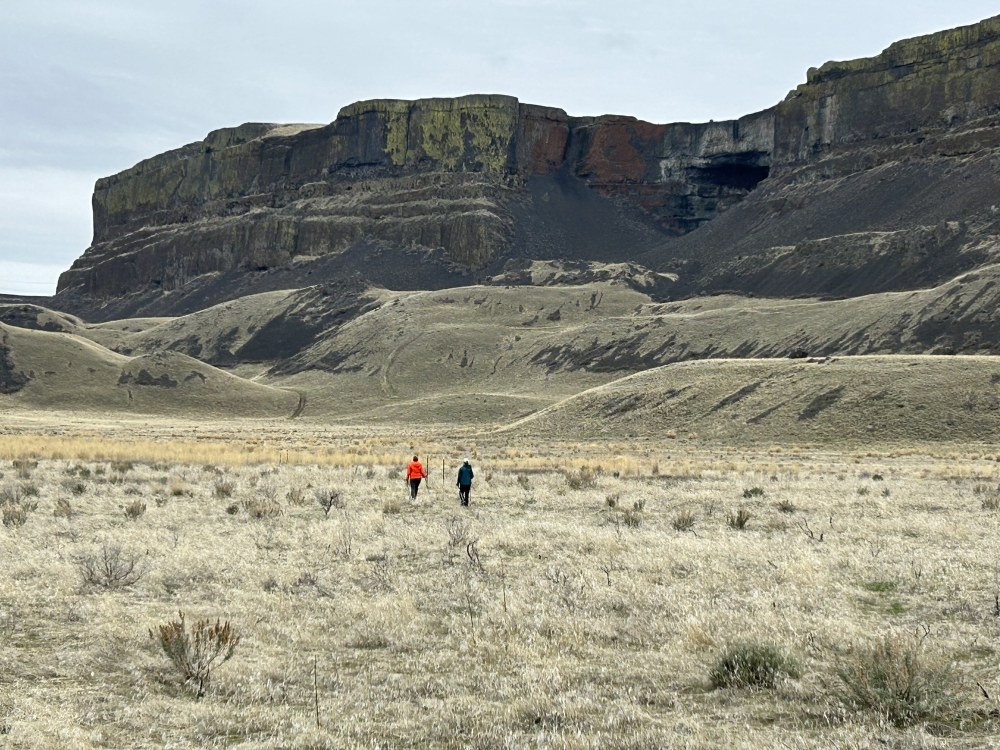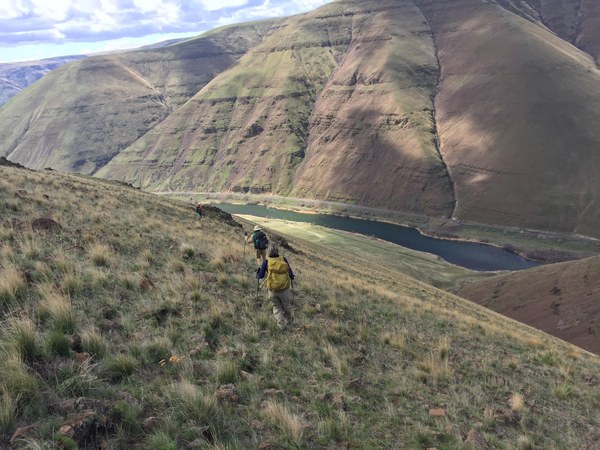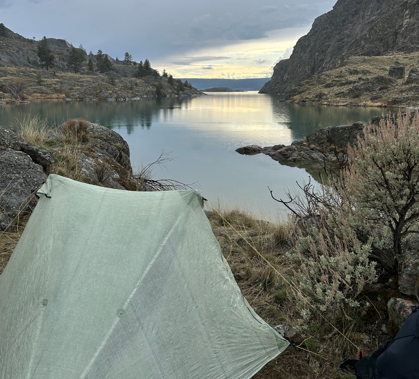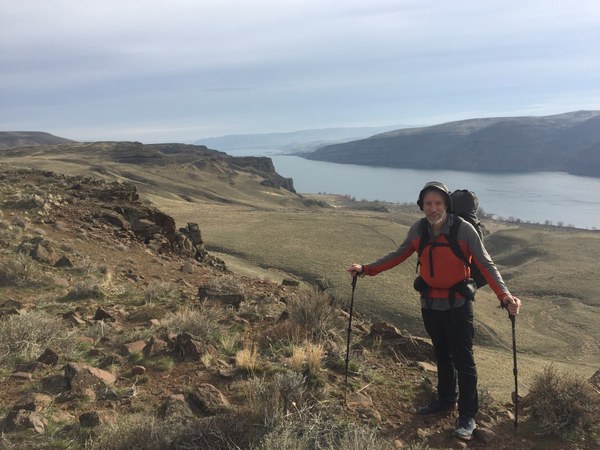
I was forty years old when I went on my first backpacking trip. We visited Second Beach in Olympic National Park, and the experience left me hungry for more. I had to go again, first with friends who mentored me, and then solo. I couldn’t get enough.
About a year later, I had a revelation that I should bring my kids along on these adventures. Four little ones, dad, and two tents hit the trail. My vision of what backpacking could be was growing.
On a solo June trip in the Teanaways, I encountered significant snow at Navaho Pass and knew I was in over-my-head. I needed more training. So at fifty, I joined The Mountaineers (clearly one of my better life choices) and took the Scrambling course, where my vision of what could be (off-trail travel) expanded once again. Shortly thereafter, I became a Backpack Leader.
Not satisfied with the seeming brevity of the backpacking season, I began to push the boundaries of backpack trips — venturing out beyond the idyllic months of July to September. Having soon exhausted the early season trips The Mountaineers has traditionally offered, I began to develop my own new, original backpacking routes that would extend the season further.
 Hiking along the Deschutes River.
Hiking along the Deschutes River.
In developing shoulder season backpacking trips, I began by focusing on existing trails, routes, and access points, saw to it that there was reliable water, and sought out appropriately spaced camp sites. Often known day hikes were connected with off-trail segments to make a workable three-day trip. Once I got a handle on designing these early-season trips, I extended my research and trip design to late-season/fall trips.
Eventually, I had enough beta and extra-early and extra-late season trip possibilities and experiences to create the first Mountaineers Shoulder Season Backpacking course in 2022.
What is shoulder season backpacking?
Shoulder season backpacking is backpacking in the darker and wetter months, roughly October through May. It is an attitude of embracing the beauty of the desert and/or the mid-fall chill. Shoulder season trips require you to push through the logistical challenges to jump at that early first trip of the year or sneak in an extra-late trip before the winter comes. You’ll find these to be different experiences than the high, alpine meadows or warm, lakeside camps of summer. These backpacking trips offer a more subtle, but no less refreshing, escape.
 Camping at Banks Lake.
Camping at Banks Lake.
What you’ll love
This season provides some delightful surprises, including wide-open spaces, amazing late-fall colors, early-season wildflowers, and frequent sunshine. One of the big draws is the respite the Central Washington desert offers from Western Washington’s rain and clouds. While March and April in Seattle are likely to be 50s and rainy, it is frequently 60-65 degrees and sunny in Vantage, just two hours away. The desert areas, more accurately known as the shrub-steppe ecosystem, have a unique beauty with amazing basalt rock formations, unique wildlife, and unusual plants. Spring trips can offer several hundred different types of flowers in bloom, and late-fall trips dazzle with golden larches and red huckleberry foliage. Winter trips to the ocean have also been surreal.
What you’ll find challenging
The challenges of shoulder season trips are many. The most significant issue is darkness. The night is long lasting: 10- 16 hours in the mid-fall to early-spring months. Night-time temperatures at or below freezing are common. Additionally, snow on the trail, at the camps and access roads, or on the highway passes (most trips require crossing Snoqualmie or Stevens Pass) needs to be considered. You need to pay close attention to the weather. Often trips are done spontaneously when a dry weekend is forecasted, and many times rescheduled when a storm is approaching. Participants need to have comfort with the unknown and the flexibility to adjust the trip as they go. Almost all the shoulder season trips I lead incorporate off-trail travel. Most off-trail routes are not hard, but do require navigation skills and some experience and comfort being off the trail.
 Rob at Frenchmen Coulee.
Rob at Frenchmen Coulee.
TOP TIPS TO MAKE THE MOST OF YOUR SHOULDER SEASON BACKPACK
Plan thoughtfully. Each day needs to be thoughtfully choreographed to fully utilize the short daylight and best enjoy — or endure — the long nights. My groups often enjoy an hour or two around a campfire after dark and then pursue personal movies, podcasts, or music in their tents until sleepy. Personally, I don’t mind going to bed early so I can catch up on sleep for 10+ hours.
Pack for colder temperatures. The mornings are always cold — pack that puffy. Don’t forget to bring those down pants; and down booties are nice too. If the ground is frozen or covered in snow, two pads are a must to reduce heat loss via conduction. Keep in mind that packs are often a bit heavier with this added gear.
Pick the right location. Most late-winter to spring trip locations center around the Columbia River between Wenatchee and Vantage and in and around the Yakima River Canyon between Ellensburg and Yakima. There are also routes near the Tri-cities, Banks Lake, and on The Deschutes River in Oregon. The best October to early November trips are on the eastern slopes of the Cascade mountains and feature either the brilliant golden hues of the subalpine larch (about the first week of October) or the western larch (late October to early November).
Know your land managers. Land management regulations for these trips are varied. Most of the desert areas are Washington State Wildlife Areas, managed by the Washington Department of Fish and Wildlife (WDFW). Some are managed by the Bureau of Land Management (BLM). Both of these agencies generally allow unlimited access and dispersed camping. A Discover Pass is required for trailheads managed by Washington State and an America the Beautiful Pass (Federal Lands Pass) is required for trailheads managed by BLM. Campfires are often prohibited after about April 15 on the state lands, but you should check specific restrictions for the area you are visiting at the time of your trip.
Curious how to maintain your fitness through the shoulder season? Read our latest Peak Performance - Spice Up Your Shoulder Season Training Routine and let Courtenay Schurman guide the way.
For more information, training, and field trips for early and late-season backpacking, sign up for Rob’s Shoulder Season Backpacking course offered in winter 2024.
This article originally appeared in our fall 2023 issue of Mountaineer magazine. To view the original article in magazine form and read more stories from our publication, visit our magazine archive.
 Rob Erickson
Rob Erickson